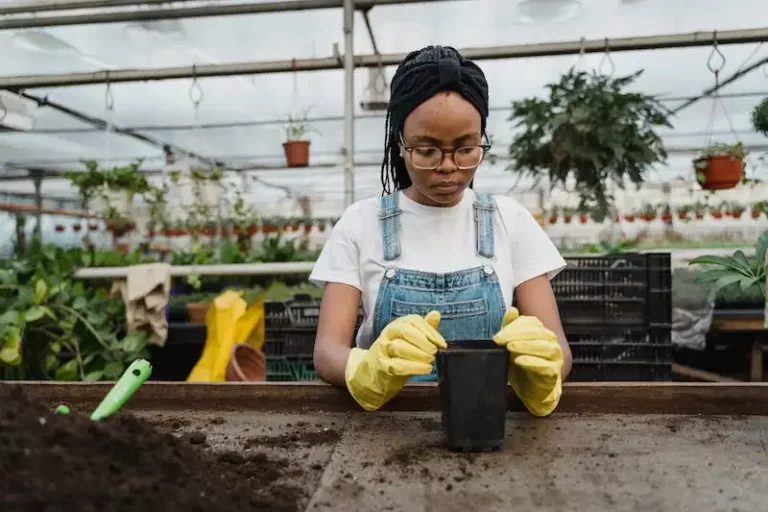Tomatoes are a popular and versatile fruit that can be enjoyed in many different ways. They are delicious raw, cooked, or as a part of various dishes, making them a staple for many home gardens. However, one common problem that tomato growers often face is the issue of splitting. In this article, we will discuss three great ways to prevent your tomatoes from splitting and ensure that you can enjoy their wonderful taste for a longer time.
The first way to prevent tomato splitting is to provide consistent moisture. Tomatoes need a regular supply of water to thrive, but too much can cause the fruits to burst. By watering them regularly and keeping the soil consistently moist, you can help prevent splitting caused by sudden fluctuations in moisture levels. Additionally, using a soaker hose or drip irrigation system can help ensure that the water reaches the roots without wetting the leaves, which can make the plants more susceptible to diseases.
The second way to protect your tomatoes from splitting is to improve the drainage in your garden. Excess water in the soil can cause the fruit to expand rapidly, leading to cracks and splits. Make sure that your garden has good drainage by incorporating organic matter, such as compost, into the soil. This will help improve water infiltration and prevent waterlogged conditions that can lead to splitting. Additionally, avoid over-watering and mulch around the base of the plants to retain moisture while allowing excess water to drain away.
Lastly, you can try planting split-resistant tomato varieties. Some types of tomatoes, such as plum and cherry varieties, are less prone to splitting. These varieties often have thicker skins that can withstand fluctuations in moisture levels better than other types. Consider researching and selecting split-resistant varieties for your garden to minimize the risk of splitting.
By following these three methods, you can greatly reduce the chances of your tomatoes splitting and ensure that you can enjoy a bountiful harvest of beautiful, intact fruits. Remember to always provide consistent moisture, improve the drainage in your garden, and consider planting split-resistant varieties. With the right care and attention, you can keep your tomatoes safe and enjoy them for a longer time.
Why Tomatoes Split and How To Prevent It
Tomatoes are well-known fruits that can be grown in almost every garden. However, one of the most frustrating issues that tomato growers face is the problem of tomato splitting. This occurs when the tomatoes develop cracks and splits on their skin, which can ruin their appearance and affect their taste.
There are several factors that can cause tomato splitting. One of the main reasons is inconsistent watering. Tomatoes need consistent moisture to thrive, and drought conditions followed by sudden rainfall can cause the fruits to expand rapidly, leading to splitting. Another factor is poor drainage. If the soil is not well-draining, it can’t handle excessive water, causing the tomatoes to absorb more water than they can hold, which results in cracking.
Another cause of tomato splitting is the level of nutrition provided to the plants. Tomatoes require a balanced supply of nutrients, including nitrogen. If there is an imbalance in nutrition, it can lead to rapid growth and weaken the skin of the tomato, making it more prone to splitting. Additionally, overcrowding the plants can lead to competition for resources, which can also contribute to splitting.
To prevent tomato splitting, there are several measures you can take. One option is to provide consistent moisture to the plants. This can be achieved by watering the tomatoes deeply, about an inch per week, and using a soaker hose or drip irrigation system to deliver water directly to the roots. Another way is to mulch around the plants to help retain moisture in the soil.
Ensuring proper drainage is also important. Make sure to plant tomatoes in well-draining soil or create raised beds with good drainage to prevent excessive water accumulation. Additionally, providing a balanced supply of nutrients through regular fertilization can help strengthen the tomatoes’ skin and make them less prone to splitting.
Considering the weather conditions before planting tomatoes is essential. If you live in an area with inconsistent rainfall, it may be wise to choose crack-resistant tomato varieties that are more resilient to splitting. These varieties have thicker skin and are less prone to cracking, even under fluctuating weather conditions. You can find crack-resistant tomato varieties listed on gardening websites or at your local nursery.
In conclusion, tomato splitting is a common problem that can be prevented by ensuring consistent watering, proper drainage, and providing balanced nutrition to the plants. By taking these measures, you can enjoy beautiful and blemish-free tomatoes throughout the growing season.
Why Do Tomatoes Split
Tomatoes are a great and versatile fruit that can be used in a variety of ways. However, one common issue that many growers face is the problem of tomatoes splitting. This can be a frustrating problem, as it can ruin the appearance and taste of the fruit.
There are several factors that can cause tomatoes to split. One of the main causes is fluctuation in waterings, both over and under watering can lead to tomato splitting. When tomatoes receive inconsistent water, the fruit can absorb the water too quickly, causing the skin to expand and crack. Similarly, sudden heavy rainfall after a dry period can cause the fruit to swell and split.
Another cause of tomato splitting is improper soil moisture. If the soil is too dry and lacks adequate drainage, the tomatoes may not get enough water to keep them hydrated. On the other hand, if the soil does not drain well and becomes saturated, the excess water can put pressure on the fruit and cause splitting. It is important to provide consistent, deep waterings to ensure proper soil moisture.
Some tomato varieties are more prone to splitting than others. Varieties with thinner skin, such as heirlooms, are more likely to split. In contrast, crack-resistant varieties have thicker skin that can withstand fluctuations in water and prevent splitting.
In addition to water-related issues, temperature fluctuations can also contribute to tomato splitting. Excessive heat or sudden temperature drops can cause the fruit to expand and contract rapidly, leading to cracks. Wind can also contribute to this problem by drying out the fruit and causing it to lose moisture.
To prevent tomato splitting, it is important to use proper cultivation techniques. This includes selecting crack-resistant varieties, providing consistent and deep waterings, and ensuring the soil is well-draining. It is also important to pick tomatoes when they are fully ripe, as unripe tomatoes are more prone to splitting. Additionally, adding compost to the soil can help improve its moisture retention and provide the necessary nutrients for healthy tomato growth.
In conclusion, tomato splitting is a common issue that can greatly affect the quality of the fruit. By understanding the causes and taking proper precautions, you can prevent this problem and enjoy delicious, crack-free tomatoes.
How To Prevent Tomatoes from Splitting
Tomatoes are a popular and delicious addition to any home garden. However, one common problem that many tomato growers face is fruit splitting. This occurs when the tomatoes develop cracks or splits in their skin, which can be unsightly and make the fruit more susceptible to disease. To avoid this issue and ensure that your tomatoes stay healthy and intact, here are 3 great methods to prevent splitting.
- Consistent watering: One main cause of tomato splitting is irregular watering. When tomatoes receive uneven waterings, the inside of the fruit can grow faster than the skin can expand, resulting in splits. To combat this, aim to provide consistent and even moisture to your plants. You can do this by watering deeply and evenly, either by hand or using a drip irrigation system.
- Improve soil drainage: Another factor that contributes to tomato splitting is poor soil drainage. If your tomato plants are sitting in waterlogged soil, it can put pressure on the skin and cause it to crack. To ensure proper drainage, plant your tomatoes in well-draining soil or amend your existing soil with compost or other organic matter to improve its structure.
- Choose split-resistant varieties: Lastly, selecting tomato varieties that are known for their resistance to splitting can greatly reduce the occurrence of this issue. Plum tomatoes and heirlooms are particularly prone to splitting, so if you’re growing these types, be extra vigilant. On the other hand, there are many split-resistant varieties available on the market that growers can choose from. Do some research and find the best option for your garden.
By following these tips, you can effectively prevent tomato splitting and enjoy a bountiful harvest of beautiful, intact tomatoes. Remember to provide consistent watering, improve soil drainage, and select split-resistant varieties. With these practices in place, your tomatoes will thrive and be free from any splitting issues throughout the growing season.
How To Keep Tomatoes From Splitting – 3 Great Ways To Keep Your Tomatoes Safe
Tomatoes are a delicious and versatile fruit, but they can be prone to splitting, which can be frustrating for gardeners. To keep your tomatoes safe and prevent them from splitting, there are several great methods you can try.
1. Mulch: Evenly mulching around the base of your tomato plants can help regulate soil moisture and reduce the risk of splitting. Mulch helps to retain moisture in the soil, preventing sudden fluctuations in water levels that can lead to splitting. It also provides a protective layer that helps to buffer the tomatoes from the rain, reducing the risk of oozing and cracking.
2. Pick tomatoes when they’re slightly underripe: Tomatoes that are picked when they are slightly underripe tend to be more crack-resistant. If you wait until the tomatoes are fully ripe and then pick them, there is a greater chance of them splitting. Harvesting slightly underripe tomatoes gives them time to ripen off the vine and develop a thicker and more consistent skin.
3. Consistent watering: Watering your tomatoes consistently is essential for preventing splitting. Erratic watering can cause the tomatoes to rapidly fill with water, causing them to split. It is better to water deeply and less often rather than water shallowly and frequently. This allows for better moisture penetration and drainage, reducing the risk of splitting.
By following these three methods, you can greatly reduce the chances of your tomatoes splitting. Not only will this result in a more visually appealing harvest, but it will also ensure that your tomatoes stay intact for longer, giving you more time to enjoy them. So go ahead and pick those split-resistant tomatoes, slice them up, and enjoy their great taste!
Keep in mind that while these methods can help reduce splitting, some tomato varieties are inherently more prone to splitting than others. If you consistently experience issues with splitting tomatoes, you may consider trying different varieties that are known to be more split-resistant. Additionally, visiting local growers in your area can provide valuable insights into the best tomato varieties for your climate and growing conditions.



